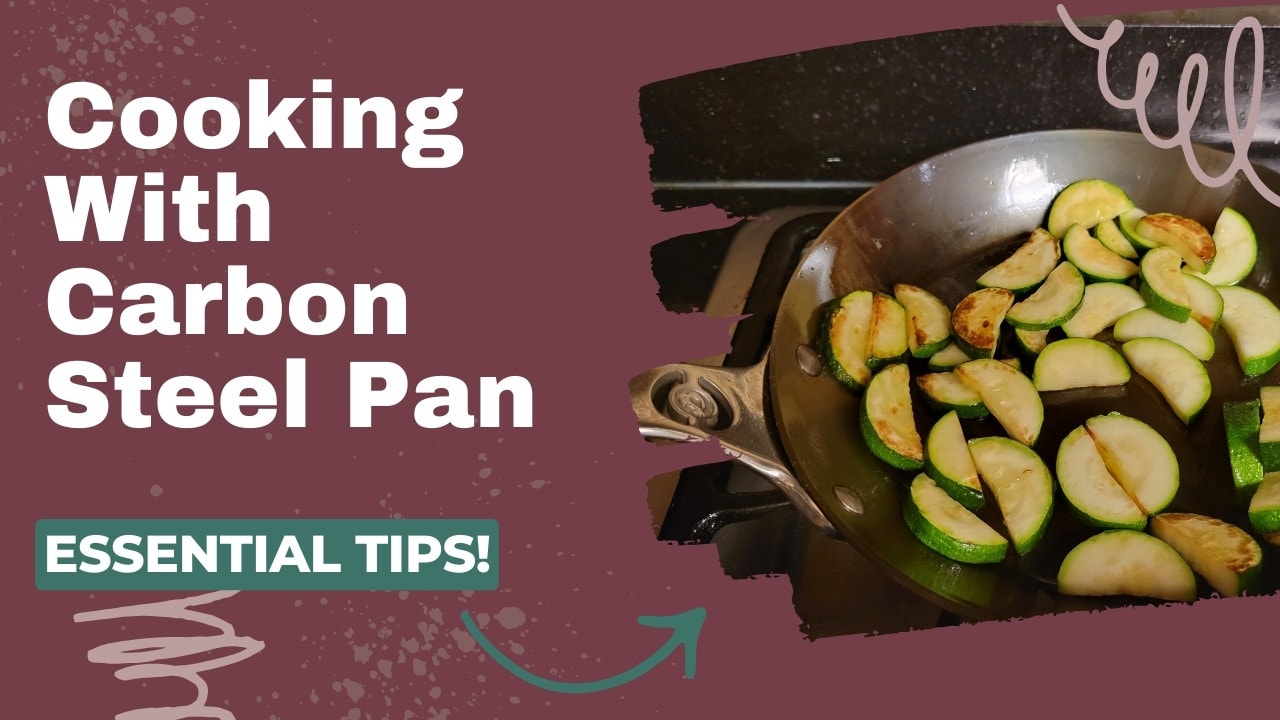When I was a professional chef, my kitchen was littered with carbon steel pans of all shapes and sizes. These pans are super durable and versatile, but they take some getting used to.
That’s why I’m here today to teach you how to cook in carbon steel like a pro. I’ll get into what carbon steel is, as well as give you some maintenance and cleaning tips to keep your carbon steel pans in excellent condition.
Cooking with Carbon Steel Pan: Essential Tips
I want you to love carbon steel as much as I do. So, here’s the TL;DR – important things to keep in mind when cooking with carbon steel.
What is a Carbon Steel Pan?
Before we get into the nitty-gritty of how to cook with carbon steel, I want to give a quick overview of what carbon steel is so you can understand it better.
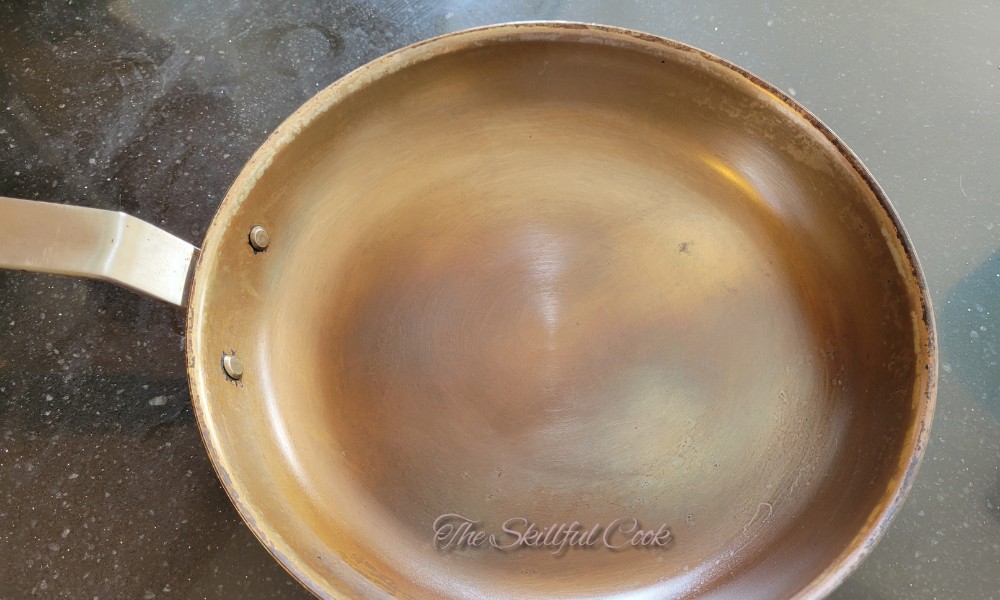
Carbon steel is made from 98-99% iron and 1-2% carbon. It may contain tiny amounts of other elements such as silicon, phosphorus, sulfur, or manganese. The high iron content means your pan will leach some iron into your food, but this is mainly considered a positive enrichment. The low carbon percentage makes carbon steel less brittle than cast iron and, therefore, very durable and versatile.
This material is often compared to cast iron because of its chemical makeup and how it cooks, but carbon steel has some unique qualities. Instead of being poured in one piece like cast iron, it’s stamped from a sheet of carbon steel; this means that the pan can be thinner. This makes the pan significantly lighter and easier to handle. Since the pan’s walls are thinner, they are more prone to warping if overheated.
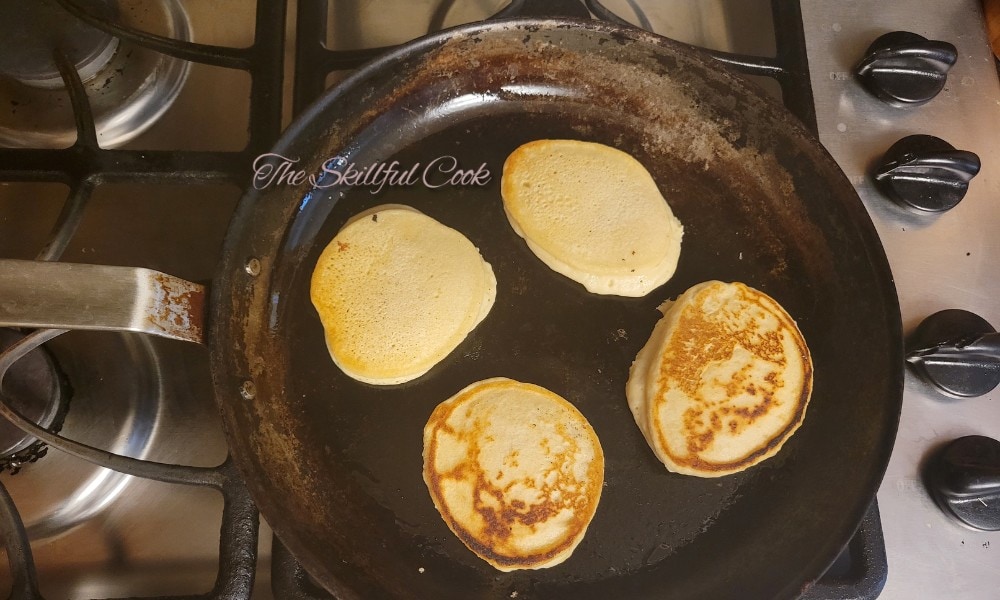
When the ingredients are added to any pan, it’s going to take a few minutes for it to come up to heat again. But, since carbon steel is a great heat conductor, it regains heat significantly faster than other materials like cast iron or stainless steel.
Seasoning Carbon Steel
Just like cast iron, carbon steel needs to be seasoned. Seasoning builds a natural nonstick layer and protects your pan from rusting. If your pan is well-seasoned and you add a glug of oil, the carbon steel should act just like a nonstick pan– but without any harmful chemical coatings. Carbon steel has a much longer lifespan than nonstick pans, so this will also save you money in the long run.
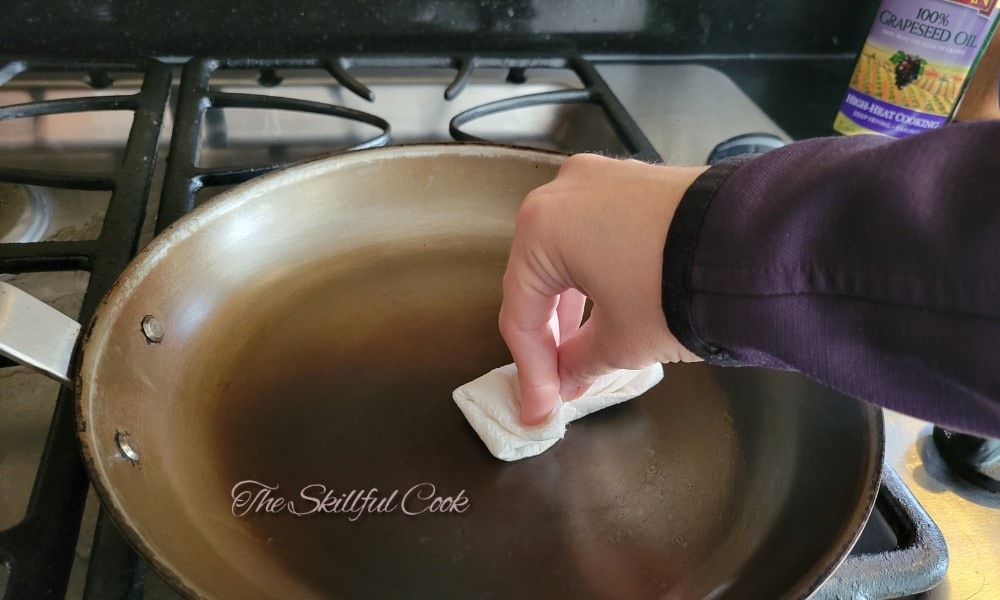
The seasoning process involves spreading a small amount of neutral oil with a high smoke point across your pan and heating it until it polymerizes. This creates a bond with the carbon steel and fuses a layer of oil to the surface. This process needs to be done regularly to maintain the nonstick coating.
Cooking with oil regularly will help season the pan even if you’re not using a high smoke point oil. That’s why it’s so important to be careful when cleaning so you don’t remove this layer – but I’ll go into that a little later. If you’re looking for oil recommendations for seasoning, I have a whole article about the best oils for seasoning carbon steel.
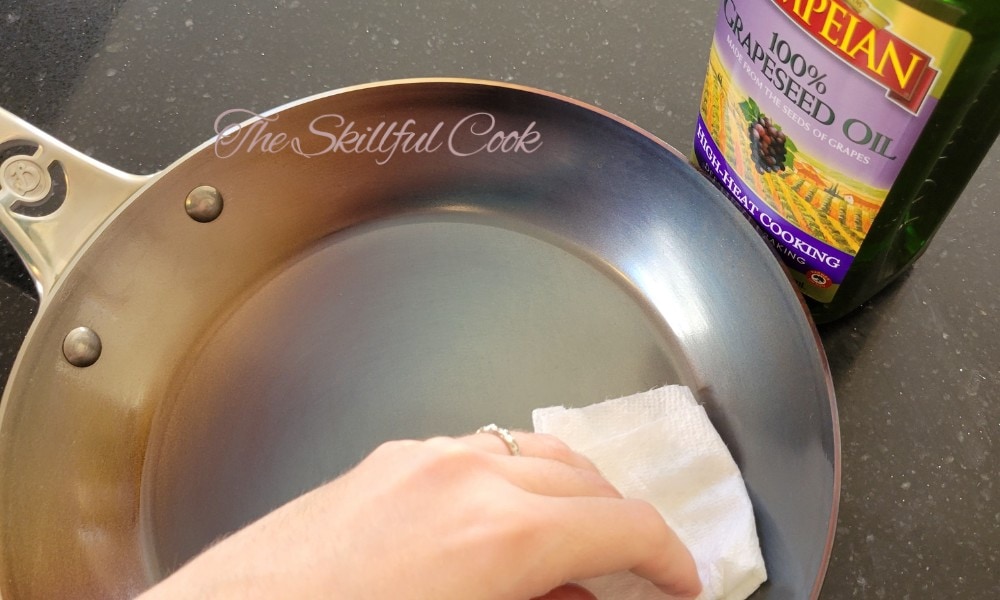
Now, if you’ve just pulled your pan out of the box and seasoned it once, don’t be surprised if the performance isn’t as good as you expected. The nonstick quality will improve as the seasoning builds up. So, really, your pan will only get better with time and use. Even preseasoned pans won’t be perfectly nonstick out the box, you really need to do the work of building up that layer at home.
What Can You Cook in Carbon Steel?
I’ve mentioned it before, but I’ll say it again: I love carbon steel because it’s so versatile. You can use it for searing, stir-frying, sauteing, baking, and even transferring from the stovetop to the oven. I love using my carbon steel pan to sear the perfect steak, but it’s just as useful for cooking veggies. I don’t know what I would do without my carbon steel wok; the even heat of this material makes it perfect for stir-frying and getting an even cook across the pan.
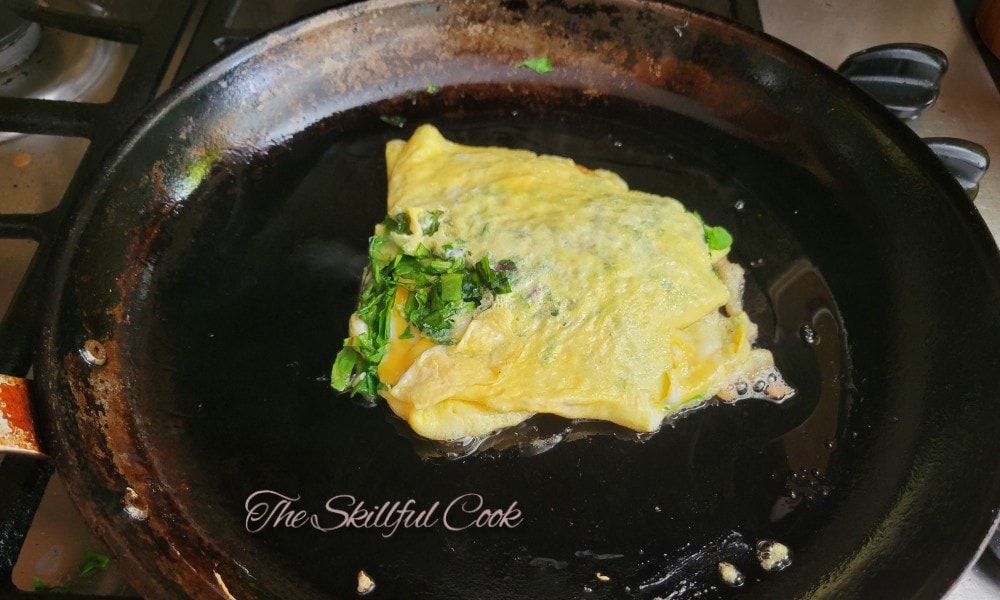
My foolproof test for a versatile pan is whether it can cook a perfect fried egg. As long as the carbon steel pan is seasoned well with enough oil, it easily passes that test. I’m also guaranteed to reach for my carbon steel skillet if I make anything battered or breaded.
Cast iron and carbon steel are often compared because they cook so similarly, as I described above. Both materials have great heat retention and adapt easily to many cooking techniques and cooktops. But, like cast iron, carbon steel is unsuitable for cooking acidic foods like tomato sauces because acids have a caustic effect on the iron surface. This can remove your seasoning and add a metallic flavor to your dish.
How to Cook in a Carbon Steel Pan
Let’s go through a step-by-step guide on how to use your carbon steel pan like a pro.
- If your pan is new and not seasoned out of the box, season your pan first. Even if it is pre-seasoned, you’ll have better results if you season it at home, too.
- If the pan is older, inspect the seasoning. If it is patchy or rusty, or if food is sticking in certain places, scrub and season the pan before cooking.
- Make sure your pan is clean with no sticky grease residue or bits of burnt food.
- Use plenty of oil. This will help further season the pan and prevent sticking. I recommend a high-smoke point oil like canola or grapeseed.
- Bring the pan up to temperature slowly to avoid warping. If your pan is not preheated sufficiently, your food is also more likely to stick.
- Only raise the heat to high once the ingredients are already in the pan.
- Allow the food to brown well before turning, as flipping early can cause sticking.
- Remove from the heat and allow to cool before cleaning.
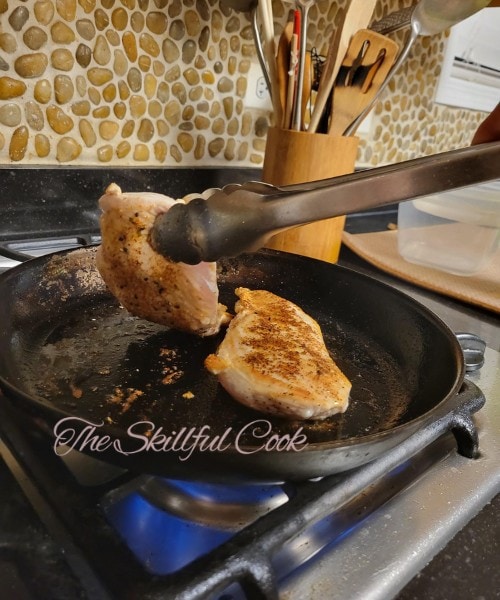
Cooking in carbon steel can take some getting used to, but once you’ve got the hang of it, you should be able to cook a multitude of dishes with ease – on any kind of cooktop. These pans can tolerate high heat, so you can even use them on a campfire! Since the surface is so durable, carbon steel is also metal utensil-safe.
Troubleshooting Common Mistakes
There are a handful of common issues that cooks encounter when using carbon steel, so let’s review them so you can avoid making the same mistakes.
Care of Carbon Steel Pans
Cleaning carbon steel properly is key to maintaining the seasoning and improving the longevity of your pan. We already covered the seasoning side of maintenance, but how should you go about cleaning your carbon steel?
The first and most important rule is never to put your carbon steel in the dishwasher. This will ruin the seasoning and cause your pan to rust. Hand washing can be a pain, but it’s well worth it to get to use carbon steel regularly.
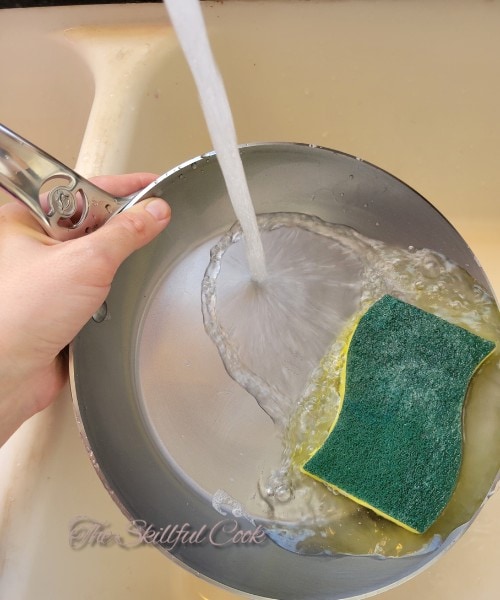
Avoid soaking your pan to get off food that sticks or using a scouring pad; this will remove your seasoning very efficiently. All you need is a pan of hot water – as hot as you can stand– a gentle sponge and a spot of mild detergent or castile soap. Don’t use too much soap or detergents that are abrasive. Gently remove the stuck food and rinse out your pan.
Lastly, I recommend drying your pan with a dishcloth but then taking it one step further. Place the pan on the stove over low heat and allow the heat to dry the pan fully.
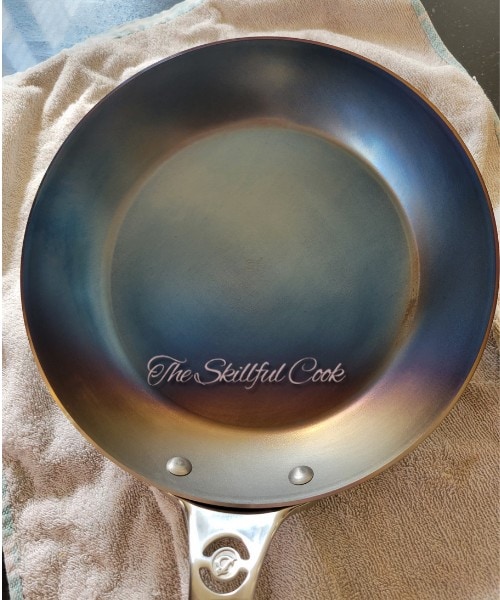
Ideally, I would suggest hanging your carbon steel pans, but I know not all kitchens have that option. If they are in a cupboard, I recommend storing them with a piece of paper towel on the surface to protect the seasoning. This will also allow you to safely stack them with other cookware without damaging it.
Frequently Asked Questions
Why is everything sticking to my carbon steel pan?
This could be happening for two reasons. Firstly, your pan may not be sufficiently seasoned. (See the seasoning section above for how this works.) If your pan is seasoned and it’s still sticking, it’s likely, that your pan is not preheated well enough. Your pan needs to be at the right temperature with a glug of oil for food not to stick.
Can you cook acidic foods on carbon steel?
I recommend avoiding cooking acidic foods in carbon steel as it can damage the surface of your pan. Cooking something with a squeeze of lemon in it won’t be a big deal, but reducing a tomato sauce will have a significant impact. It will also leave behind a metallic flavor in your food from the iron transfer. For acidic foods, try stainless steel instead.
Can you cook on a rusted carbon steel pan?
No, you shouldn’t cook on a pan with rust spots. But don’t worry, you can remove rust from your carbon steel pan! Give your rusty pan a good scrub with either hot water or an oil and salt mixture to remove any residue. Then, simply season your pan and use it as usual. The seasoning will lock in the metal and make it safe to cook with.
Is carbon steel or cast iron better?
Honestly, cast iron and carbon steel are so similar that the question of “which is better” comes down to personal preference. If you want a lighter pan that is better suited to an induction cooktop, then carbon steel is a good choice. Other than that, they behave very similarly during cooking. Carbon steel is a bit more responsive to temperature changes, and cast iron holds the heat a tiny bit longer.
Can you use metal utensils on carbon steel pans?
It’s completely safe to use metal utensils on carbon steel pans. There’s no delicate nonstick coating to damage, and they won’t affect the seasoning layer. Traditional chefs use metal spatulas on carbon steel woks and pans all the time.
Which cooktops can you use with carbon steel?
Carbon steel pans are induction-compatible and suitable for all cooktops. They work just as well on electric cooktops as they do on an open flame, whether it be a gas stove or a campfire. This makes these pans super versatile and adaptable to any kitchen. There are, however, lots of stories of carbon steel warping on induction cooktops if brought up to temp too quickly.
Conclusion
After this detailed breakdown, I’m sure you can see why I enjoy cooking with carbon steel so much. I hope that, by using our cooking tips, carbon steel becomes your go-to pan.
If you have any additional questions about how to cook in carbon steel, be sure to leave them below.

